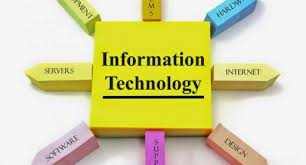Computing and programming are essential to leverage the technical skills of a student. The course Fundamentals of Information Technology has become essential the present age of computer technology and information, as the applications of information technology can be found in all aspects of our lives.
Course Objective
§ To acquire basic knowledge in Information Technology and its applications
§ To help students face the challenges when they interact with ICT
Course outcome
By the end of the course, the student should be able to:
CO1: Understand the functions, advantages & limitations of various computer devices, operating systems & software.
CO2: Able to perform Network, I/O device, OS and other basic troubleshoots
CO3: Be able to work on various applications related to Word Processors, Spreadsheets, Presentation related software’s, Windows/DOS Operating Systems
CO4: Ability to implement various strategies to secure their devices/data. Identify various ways to find/gather required information.
CO5: Recognize the trends in Information Communication Technology & would use for Competitive Advantage.
CO6 : Ability to present and discuss the advantages and limitations of Information Technology & Students will be aware of the right usage of the technology

- Teacher: JAIMOLE CROSS
- Teacher: KAYAL Padmanandam
This course is an introduction to the basic concepts and standards underlying financial accounting systems. Several important concepts will be studied in detail, including: revenue recognition, inventory, long-lived assets and long-term liabilities. The course emphasizes the construction of the basic financial accounting statements - the income statement, balance sheet, and bank reconciliation statement - as well as their interpretation.
Osmania University Syllabus
Accounting process: Introduction-Definition- Functions- Advantages Limitations- Branches of a/c-Accounting Principles-Types of account, Journal, Ledger Trial balance.
Subsidiary books: Meaning and Types of Subsidiary Books.
Bank reconciliation statementMeaning- Need- Reasons for differences between Cash book and pass book. Preparation of Bank reconciliation Statement.
Rectification of errors and depreciation: Capital and revenue expenditure and receipts-Types of errors-Suspense accounts and their rectification. Depreciation- Meaning- Causes- Objectives of providing depreciation – Methods of depreciation.
Final accounts:Final accounts of Sole Trader: Meaning- uses-preparation of Manufacturing, Trading and Profit and loss a/c and Balance Sheet- Adjustments.
Course Objectives
The course aims to at providing an in-depth knowledge in Finance Accounting concepts, conventions and the role of financial Accounting in the business. Gives a hands-on-experience in the process of learning the financial Accounting and know-how to prepare the financial statements.
| CO1 | Know about importance of accounting in business, various branches of accounting and understand the terminologies used in business |
| CO2 | understand the principles of accounting and method of recording, Journalising posting to ledgers and preparation of financial statements |
| CO3 | Know the reasons for disagreement between Cash book and pass book and also to reconcile them. |
| CO4 | Know the importance of cash and non cash transactions types of errors that occur while recording and preparing financial statements |
| CO5 | Know the causes for disagreement of trial balance and method of rectifying them |
| CO6 | understand and differentiate between Capital and revenue items and its treatment |
| CO7 | Know the difference between direct and indirect expenses, preparation of financial statements Trading account Profit and Loss account and Balance Sheet. |
| CO8 | know the method of preparing various subsidiary books |
- Teacher: DEEPA AGRAWAL